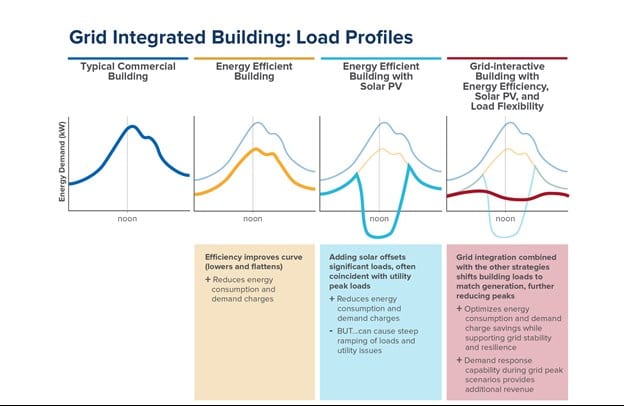
Report | 2019
Value Potential for Grid-Interactive Efficient Buildings in the GSA Portfolio: A Cost-Benefit Analysis
A grid-interactive efficient building (GEB) is an efficient building with smart technologies characterized by the active use of energy efficiency, solar, storage, and load flexibility to optimize energy use for grid services, occupant needs and preferences, and cost reductions. GEB measures go far beyond today’s energy management best practices. They focus on demand and the time value of energy to reduce grid constraints and enable decarbonization. A focus on GEBs optimizes benefits like cost savings, grid services, resiliency, and carbon emissions reductions.
Our report, Value Potential for Grid-Interactive Efficient Buildings in the GSA Portfolio: A Cost-Benefit Analysis, details the core ways that the US General Services Administration (GSA) could leverage its size, its leadership in the industry, and its relationships with utilities and regulators to pioneer GEBs opportunities across its portfolio. This would unlock $50 million in annual cost savings to the GSA and $70 million in value to grid users by reducing generation and transmission and distribution costs, benefiting all ratepayers. By investing in GEBs measures, developing GEBs pilots, and helping the industry understand and measure the opportunities inherent in GEBs, the GSA or any large portfolio manager can unlock an immense opportunity to save energy and money while supporting the decarbonization of our electricity sector.
